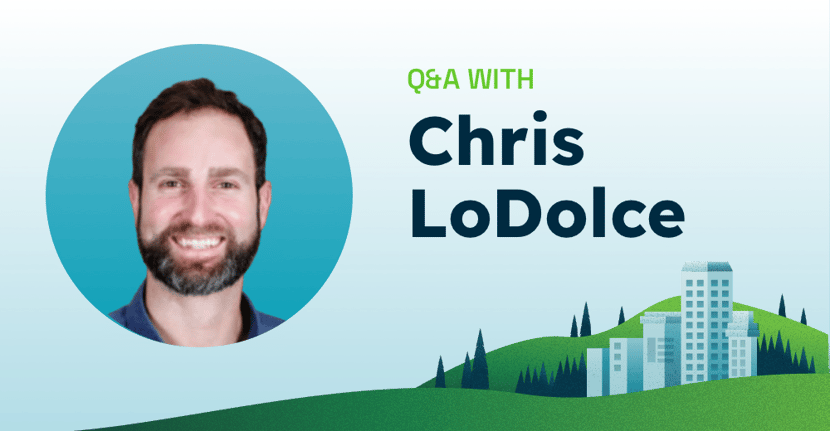
In the lead-up to the Northpass-hosted webinar, "Setting the Foundation for a Successful Customer Academy," I wanted to take the time to actually get to know our three presenters — Chris LoDolce, Lindsay Thibeault and Sarah Bedrick.
As three founding members of the HubSpot Academy team, some have said they're "Customer Education royalty." I agree with that assessment!
That said, check out our first installment of Q&A, which provides a bit of detail around how important it is for anyone leading a customer education initiative to identify and set goals for their program. Chris LoDolce kicks it off.
Richard Posluszny: So, Chris, can you tell me a bit about your experience(s) launching customer-focused academies? How did you get into it? What are you up to today?
Chris LoDolce: Sure thing.
When I first started at HubSpot in 2011 I was working as an inbound marketing consultant. Essentially, this means I was onboarding new customers and consulting with our highest paying accounts after implementation. Back in 2011, most of the onboarding time was spent teaching the philosophy, principles, strategies, and best practices alongside how to use HubSpot’s marketing tools.
Each upstream, senior team member had a specialty and we'd pull them in to do audits and advise on things like SEO, Conversions, email, etc. During these early days, we were all creating and sharing docs on how to get found online, convert that traffic into leads, analyze the results, iterate and repeat.
Around that time, my mentor Mark Kilens asked me to join his skunkworks project. It involved hosting weekly, live training sessions where we would teach our lessons to customers. At the start it was simple webinars.
Once we received an email from a customer describing their success from our teachings, I was hooked.
Moving forward to spring 2012, Mark had the chance to start V3 of the HubSpot Academy. His vision was to impact every department's KPIs. Mark brought Sarah Bedrick and me on to tackle this initiative.
From there, I spent the next 9 years working to build HubSpot Academy into what it is today. Thankfully, I was working alongside an incredible group of people.
And here we are today. There’s no question that the HubSpot Academy opened up a lot of people’s eyes. Now there is an entire industry built around Customer Education and the creation of academies in order to improve business metrics.
Today, I spend my time advising businesses — specifically, B2B SaaS companies — on how to build and scale their academy initiatives.
I'm a big believer that what took us 9 years to create at HubSpot Academy, can be done in 2-4 years. The biggest thing holding academy initiatives back is the lack of experience, both on leadership teams and with available playbooks.
Our work revolves around helping businesses build and scale their educational departments with goals across Marketing, Sales, Services/CS and Product.
RP: What do you think is the biggest misconception surrounding learning-powered initiatives, today?
CL: It's a two-part, compounding misconception.
First, any content that shares knowledge or strategy, etc. is educational content. It's common to hear, "We already have the content. We have blog posts and decks we present at conferences." We’d like to order the content, record a video, and add quizzes.
As those of us who develop educational content know, there is much, much, more that goes into creating educational content that drives meaningful impact for the learner and business.
Second, the time it takes to develop and maintain quality educational content that has a measurable impact.
Nearly every business I speak with says that their goal is to launch an academy in a few months in the likeness of the HubSpot Academy. To level set, it takes anywhere from 30 hours to 600 hours to develop 20 minutes of impactful, self-paced educational content. Keep in mind this depends on how much engagement you’re aiming for as well as the format used.
If you’re curious for more color, check out this study from the Association for Talent Development (ATD) on how long it takes. Additionally, there are hundreds of additional hours to build out the program as well.
RP: What’s the biggest hurdle that has to be cleared by today’s professionals if they’re planning on the creation and launch of an academy? Is it strategic or more tactical? A combination of both?
CL: Oh, gosh! I’m sitting here trying to visualize different size hurdles as they relate to the many challenges professionals will face when building and scaling an academy.
I’d say the height of each hurdle is dependent on the organization. Several that are worth sizing up to identify where your focus and energy will need to be, and when, are:
-
- Executive and upper management buy-in.
I’m finding the percentage of discussions I have with executives that are planning to fund an academy initiative is on the rise, especially coming out of successful Series B rounds. In this case, the hurdle is very low but most are not so fortunate. Typically, an academy initiative starts within one department and the person leading the effort has to put focused energy into gaining executive buy-in. - Organizational understanding of what educational content is, how it’s developed and the impact it can have on each department's goals.
Usually what teams ‘hear’ is something along the lines of, “Your software is hard to use,” or, “We’re replacing your CSM/account manager role with on-demand training.”
Of course, this is never the case. Educational content is not a replacement for people, but it should be used as a complement to the work these teams are doing. - Resources.
Even if you’re lucky enough to have executive buy-in and you get half of the budget and headcount needed to actually deliver an academy, your success will still depend on your ability to get other team’s commitment to your program.
The list here is a blog post in and of itself, but some examples include, Ops for integrations, Marketing for communication and promotion, and Services/Customer Success for recommending courses.
- Executive and upper management buy-in.
CL: It is tactical. Especially setting the right expectations internally.
If the initiative starts out with a customer focus, and the business has enough people to go through the education for the data to be statistically significant, leading indicators can be reported on within months. Examples would include an uptick in product usage, completion rates, etc. Trailing indicators like retention, lifetime value (LTV), etc. will most likely take 6-18 months for enough data to accumulate to report on.
If the initiative is focused on building an industry-leading and category-defining certification, it's very dependent on the current reach and effectiveness of Marketing as well as alignment with the Sales and Executive team.
Speaking specifically to the SaaS business model, which I'm most familiar with, everything comes down to goals/KPIs and top/bottomline impact. If you can't report or show impact, it's in the best interest of leadership to move resources elsewhere to an initiative that can be quantitatively tracked. Because of this, it’s important to get the internal resources necessary to set up the flow of learner data into your organization's primary data and reporting infrastructure.
RP: When it comes to setting business/department (org)/team metrics, is any one set more critical than the others? Should there be a prioritization? Do I need to define all of them before starting a learning program?
CL: I'm a firm believer that you need an outline of business/department/program goals from the start.
Metrics are a universal language within organizations. It's a great way to drive alignment from the beginning and identify where more stakeholder buy-in is required.
RP: Do you have a key tip for newbies seeking to get started with an academy of their own?
CL: Understand your company’s business model and how leadership makes strategic decisions. Double any timeline you have to commit to and focus on building strong relationships with the leaders across the org who will see a positive impact from your academy. They will be your biggest promoters/detractors.As a leader of an academy initiative, it’s important to be focused internally but make sure you — and definitely your team — is focused on empowering the learner to succeed and take action. Your end product will vary drastically if your team is focused on learner success vs. business success.
For everything else just join the Customer Education Slack community or send me a LinkedIn message with questions.
RP: Out of all your Online Training experience, what would you say is the best piece of advice you received along your journey?
CL: The best way to sum it up is a quote from Simon Sinek.
"People don't buy what you do, they buy why you do it."
Develop the program with the learners' success and career growth at the forefront of everything you do. The result will be content that speaks to the learner’s goals — not your KPIs — and is both educational and inspirational in nature.
There are plenty of educated people who do nothing with what they learned. Education without the inspiration to take action is worthless.
Like What You Just Learned? Join Us.
We're only getting warmed up.
If you want to hear more learnings from Chris, Lindsay and Sarah, this webinar is not one to miss. Sign up, today!

.png?width=3251&height=1107&name=NP_ByGS_ColorLogo%20(1).png)


